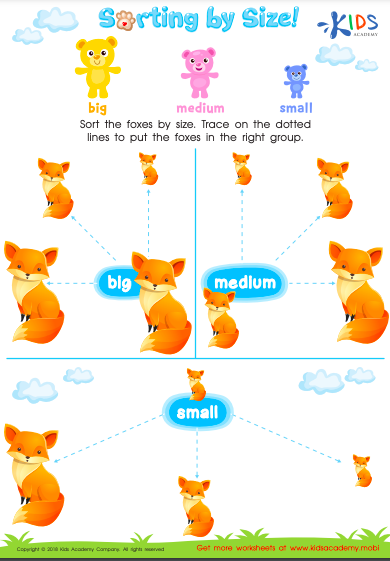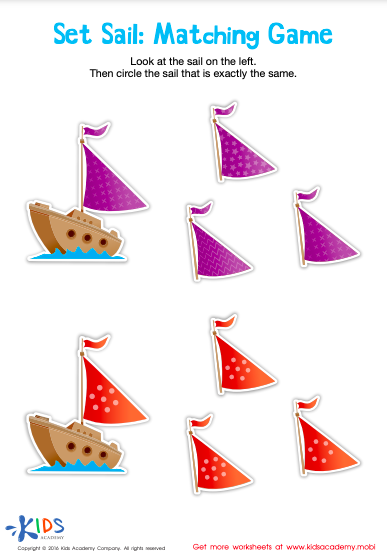-
English
-
English Pre-K
-
Unit 1: Early Literacy Skills
-
ABCs
- Pre-writing Activities
- Letter A
- Letter B
- Letter C
- Letter D
- Letter E
- Letter F
- Letter G
- Letter H
- Letter I
- Letter J
- Letter K
- Letter L
- Letter M
- Letter N
- Letter O
- Letter P
- Letter Q
- Letter R
- Letter S
- Letter T
- Letter U
- Letter V
- Letter W
- Letter X
- Letter Y
- Letter Z
-
Phonological Awareness
- Rhyming Words
- Letter Sounds B, C, D, and F
- Letter Sounds G, H, J, and K
- Letter Sounds L, M, N, and P
- Letter Sounds Q, R, S, and T
- Letter Sounds V, W, X, Y, and Z
- Letter Sounds A, E, and I
- Letter Sounds O and U
- Beginning Sounds
- Matching Letters to Sounds
-
ABCs
-
Unit 2: Vocabulary
-
Common Words
- Sorting Words into Categories
- Color Words
- Verbs and Adjectives
-
Sight Words
- Sight Words 'I' and 'Can'
- Sight Words 'You' and 'Like'
-
Common Words
-
Unit 3: Print Awareness
-
Parts of a Book
- Working with a Book
- Spaces Between Words
- Text and Illustrations
-
Picture Books and Poems
- Picture Book Text Features
- Poem Text Features
- Signs and Labels in the Community
-
Parts of a Book
-
Unit 4: Reading Literature
- Questions About Stories
- Discussing Stories
-
Unit 5: Reading Informational Texts
- Retelling Details in a Text
- Questions About a Text
- Connections Between Events
- Text Features
- Describing Illustrations
-
Unit 1: Early Literacy Skills
-
English Pre-K
-
Math
-
Math for Pre-Kindergarten
-
Logic and Geometry
-
Matching and Sorting
- Same and Different
- Which One Is a Little Different?
- Objects That Go Together
- Sorting by Color and Size
- Sorting The Same Group in Different Ways
- Patterns
-
Shapes
- Shapes in Our Environment
- Naming Shapes Regardless of Size
- Making Shapes in Preschool
- Comparing Shapes
- Relative Positions
- Sorting Shapes
-
Matching and Sorting
-
Early Number Sense
-
Numbers 1–5
- Counting to 3
- Counting to 5
- Arranging Objects up to 3 Objects
- Arranging up to 5 Objects
- Writing Numbers 1–5
-
Numbers 1–5
-
Numbers up to 10
- Counting to 10
- Arranging up to 10 Objects
- Number 0
- Writing Numbers 6–10
- Breaking Down Numbers 6-10
-
Logic and Geometry
-
Math for Pre-Kindergarten
Matching and Sorting
As our child builds their knowledge and curiosity about the world around them, it becomes important for them to be able to make observations about how things are alike and different. These observational skills can be applied in all aspects of learning from reading and writing to math and science. Sorting and matching also helps students begin to build problem solving and critical thinking skills. While we as adults automatically sort and match items, children need to build their capacity to recognize similarities and differences in order to categorize and sort items.
A great way to support your child in building these skills is to model your own thinking. As you are matching up socks in the laundry, think out loud and verbalize the thought process. Ask your child to help you in this type of everyday task. “Hmmm, this sock is white with blue polka dots, can you help me find another sock that is just like this one? I see one sock that is white, but it has green stripes, so that is not a match…” You can also set up learning experiences using household items such as buttons and egg cartons. Ask your child to find buttons that are the same color and put them together in one section of the egg carton. Nature is another great place to practice this skill. Collect rocks with your child and ask them to describe how they feel and look. These observational skills will help them to be better able to identify similarities and differences. Once you have talked about the rocks, ask them to sort them into groups of big and small rocks.
You will find a variety of activities in the Matching and Sorting chapter that will foster the growth of these early mathematical skills.
Your child will take a trip under the sea in this fun video that integrates the science concept of camouflage and color matching.
This adorable sorting activity encourages children to think about sorting based on size. Children will use vocabulary words such as big, medium, and small to describe and sort pictures.
Out on the high seas, your child will need to pay attention to both colors and patterns as they sail into this fun activity!
Matching and sorting activities are fun and beneficial in so many ways. Check out more of our resources using the Kids Academy catalogue!
By: Nora Brown
Elementary School Teacher


